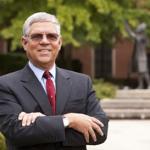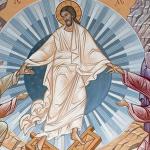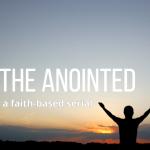The following is a more extensive version of a post from February 2004, under the same title.
INTRODUCTION
My thesis is developed over against a widespread conception of the Renaissance as the beginning of the modern world, the beginning of secularism and humanism. I am not an uncritical fan of the Renaissance, but I think that this reading of the Renaissance is terribly one-sided, and I want to restore it to an honorable place in the history of Christian culture and thought. I want to set up the first part of an argument to the effect that, rather than being the beginning of modernity, modernity is in fact a counter-Renaissance movement. The Renaissance was in essential ways a burst of freedom for thought and culture, and modernity is an effort to bring the creative energies of the Renaissance back under control
Let?s begin with a few definitions. Zizek, in *The Puppet and the Dwarf*, defines modernity in terms of secularism: “One possible definition of modernity is: the social order in which religion is no longer fully integrated into and identified with a particular cultural life-form, but acquires autonomy, so that it can survive as the same religion in different cultures. This extraction enables religion to globalize itself . . . .on the other hand, the price to be paid is that religion is reduced to a secondary epiphenomenon with regard to the secular functioning of the social totality. In this new global order, religion has two possible roles: therapeutic or critical. It either helps individuals to function better in the existing order, or it tries to assert itself as a critical agency articulating what is wrong with this order as such, a space for the voices of discontent — in the second case, religion as such tends toward assuming the role of heresy.” Zizek goes on to retrieve the “materialist” kernel of early Christianity and he argues that the early church was the first “revolutionary collective.”
Norman Davies offers the following definition of the Renaissance in his Europe, A History: ?The essence of the Renaissance lay not in any sudden rediscovery of classical civilization but rather in the use which was made of classical models to test the authority underlying conventional taste and wisdom . . . . No simply chronological framework can be imposed on the Renaissance. Literary historians look for its origins in the fourteenth-century songs and sonnets of Petrarch, who observed human emotions for their own sake. Art historians look back to the painters Giotto and Masaccio (1401-28), to the architect Filippo Brunelleschi (1379-1446), who measured the dome of the Pantheon in Rome in order to build a still more daring dome for the cathedral in Florence, or to the sculptors Ghiberti (1378-1455) and Donatello (c. 1386-1466). Political historians look back to Niccolo Machiavelli (1496-1527), who first explains the mechanics of politics as power for power?s sake. Everyone one of these pioneers was a Florentine.
SCHAEFFER
To set the stage, let me summarize the views associated with Francis Schaeffer, a popular Christian teacher and thinker in the 20th century. In a number of books, he developed the notion that the Renaissance was the beginning of secular humanism, of a man-centered worldview, in which man takes the place of God in determining what is true and false, right and wrong. For Schaeffer, secularism is the notion that the material world of economics, society, and politics functions outside of religion. Or, conversely, that religion is some circumscribed arena of life: cut off from the rest of life. According to Schaeffer, this began with the Renaissance (I am summarizing his Escape from Reason, ch 1).
According to Schaeffer, Aquinas set out the terms of discussion for later thinkers by talking about a ?two-story?Euniverse, with grace at the top and nature at the bottom. The higher level is associated with God, heaven, unseen, soul, unity; the lower world of nature is the created world, earthly and visible and material things, body, and diversity. Prior to Aquinas, the realm of grace was all-important, and nature was considered to be nothing. On the other hand, nature is not important: mountain climbing was not seen as something to be done for its own sake. With Aquinas, earthly things come to be included in the Christian vision. Aquinas separated the two realms of nature and grace, but also thought that they were connected and unified. With the Renaissance, the interest shifted to the earthly realm of nature. In some respects, this was a good thing: ?nature received a more proper place. From a biblical viewpoint nature is important because it has been created by God, and is not to be despised. The things of the body are not to be despised when compared with the soul. The things of beauty are important. Sexual things are not evil of themselves. All these things follow from the fact that in nature God has given us a good gift, and the man who regards it with contempt is really despising God?s creation.?E
Welcome as this emphasis on nature was, the Renaissance also had a number of serious negative effects. In particular, Schaeffer claims that in Aquinas the intellect of man was not seen as being affected by the fall (which is in fact not true), and the intellect of man was increasingly seen as autonomous. This has several effects. First, there is the development of natural theology, theology developed without reference to Scripture. Philosophy also declared its independence?and separated from revelation. Therefore philosophy began to take wings, as it were, and fly off wherever it wished, without relationship to the Scriptures.?E Secularism began to enter the arts, such that the arts became autonomous from theology, philosophy, and so on. Painters began to paint figures, even biblical figures, realistically, rather than in terms of a heavenly portrait. In short, the effect of the Renaissance was the ?nature was made autonomous,?Eand as a result ?nature began to ?eat up?Egrace.?E Schaeffer summarizes: ?Through the Renaissance, from the time of Dante to Leonardo da Vinci, nature gradually became more and more autonomous. It was set free from God as the humanistic philosophers began to operate ever more freely. By the time the Renaissance reaches its climax, nature had eaten up grace.?E
Schaeffer is not wholly wrong here. The Renaissance ideal of the ?complete?Eor ?universal?Eman meant a man who had mastered all branches of learning and thought and did not rely on any outside authority to form his judgments, tastes, ideas. There is a strong note of autonomy in that portrait. But I don?t think that Schaeffer gets Aquinas right, and I?m going to argue that he doesn?t get the Renaissance right either, or at least not the entire Renaissance.
TOULMIN ON RENAISSANCE
As an alternative to Schaeffer?s reading of the Renaissance, and its role in the development of modern secular humanism, let me summarize the argument of Stephen Toulmin, in a wonderful book, *Cosmopolis: The Hidden Agenda of Modernity.* Toulmin says that the Renaissance is the beginning of modernity in many ways, particularly the later Renaissance figures of the 16th century. Writers like Montaigne in France and Shakespeare in England represent a post-medieval outlook. But Toulmin does not believe that the Renaissance was the beginning of modernity in the way that Schaeffer suggests. The Renaissance was not responsible for opening up a secular space and putting man at the center.
Rather, the Renaissance is modern in several other senses. First, he points out that many of the leading figures of the Renaissance were not antireligious or anti-Christian. Erasmus and Montaigne, for example, both thought of themselves and remained solid Catholics throughout their lives. They were humanists in that they admired and studied the humanities, but not in the more recent sense of being secularists. In religion, the Renaissance was marked by a reac
tion to the global ambitions of some scholastics, their desire to build large systems that (by the Humanists?Elights) attempted to dot every i and cross every t. Renaissance humanists were skeptics about many of the sharp distinctions of theology, and they had a strong feeling for the limitations of human knowledge. Thus, they were not anti-Christian but anti-dogmatic; humanism ?discouraged intellectual dogmatism of kinds that elevated disputes over liturgy or doctrine to a level at which they might become matters of public dispute ?Eor even of life and death.?E
With regard to the study of ancient paganism, the Renaissance Humanists attempted a recovery of classical historians and of classical literature. Some of the classics of Greek and Roman antiquity were known throughout the Middle Ages, but the medievals were less interested in history and poetry than in philosophy and some logic, rhetoric, and law. Thus, the Renaissance recovery of the classics was a recovery of certain types of classic writings. For the Renaissance Humanists, ?the recovery of ancient history and literature only intensified their feeling for the kaleidoscopic diversity and contextual dependence of human affairs. All the varieties of fallibility, formerly ignored, began to be celebrated as charmingly limitless consequences of human character and personality.?E In short, the Renaissance gave attention to history and historical difference in a way that medievals had not, and corresponding less attention to philosophy. They were generally NOT philosophers, and were as skeptical regarding the dogmatism of science and philosophy as they were of the dogmatism of scholastic theology.
The Renaissance was also in large measure a recovery of rhetoric. In fact, it is possible to see the history of the middle ages in terms of the trivium, moving from the rhetorical emphasis of Augustine, through the grammatical interests of the early scholastics, to the dialectical interests of the later scholastics. In this sense, the Renaissance is a recovery of the centrality of rhetoric. Arguments were analyzed as much for their rhetorical deftness as for their logical rigor, and this fascination with rhetoric spilled over into daily life, as self-fashioning (Greenblatt?s term), personal style, presentation, and so on became quite important.
The writings of Montaigne illustrate the tolerance, skepticism, and affirmation of nature and body that is part of the Renaissance mentality. Montaigne, with many Renaissance figures, had a strong appreciation for the goodness of the body and the goodness of nature: ?He who wants to detach his soul, let him do it?Ewhen his body is ill, to free it from the contagion; at other times, on the contrary, let the soul assist and favor the body and not refuse to take part in its natural pleasures?E(Toulmin, 37-38). Further, he argued that the mind and body are inseparable: ?Since it is the privilege of the mind to rescue itself from old age, I advise mine to do so as strongly as I can. Let it grow green, let it flourish meanwhile, if it can, like mistletoe on a dead tree. But I fear it is a traitor. It has such a right brotherly bond with the body that it abandons me at every turn to follow the body in its need. I take it aside and flatter it, I work on it, all for nothing. In vain I try to turn it aside from this bond, I offer it Seneca and Catullus, and the ladies and the royal dances; if its companion has the colic, it seems to have it too. Even the activities that are peculiarly its own cannot then be aroused; they evidently smack of a cold in the head. There is no sprightliness in [the mind?s] productions if there is none in the body at the same time.?E
Montaigne was particularly hard on anyone who would attack sex as evil: ?What has the sexual act, so natural, so necessary, and so just, done to mankind, for us not to dare talk about it without shame and for us to exclude it from serious and decent conversation? We boldly pronounces the words ?kill,?E?rob,?E?betray?E and this one we do not dare pronounce, except between our teeth. Does this mean that the less we breathe of it in words, the more we have the right to swell our thoughts with it??E
According to Toulmin, intellectual freedom, tolerance, modesty regarding large
claims, bemusement at the follies of man, concern with history and with particulars and with bodies that characterized the Renaissance was attacked in the middle of the 17th century, as thinkers like Descartes and Newton proposed a ?counter-Renaissance?Eform of modernity. The background to this was the outbreak of the wars of religion. Religious differences had erupted in bloodshed, and there was some need to bring warring parties together for the sake of political and social harmony. Societies have to agree on something, and theology is too controversial. On this pretext (and it is a pretext ?Esee the work of William Cavanaugh), thinkers started searching for unquestionable and obvious ?foundations?Efor both thought and social structure and practice. Foundationalism as a philosophical project arises from this urge to find some security in a troubled world.
Foundationalism is allied to secularism in social and political organization and theory. Just as philosophers sought uncontestable ground on which to build their systems, so political thinkers searched for principles of political organization that were not theologically grounded (or not overtly so), in order to establish political order without having to have everyone agree on some theological commitments. Toulmin insists that this was NOT a Renaissance approach. The Humanists had been too skeptical, and too aware of historical development and historical ?relativity?Eto be seduced by a foundationalist project in philosophy or social theory.
The result was a movement against the Renaissance. In place of Renaissance skepticism of all dogmatism and absolute certainty, early modern thinkers established philosophical systems based on truths that are clear and immediate and cannot be denied. In place of the Renaissance challenge to science, there is a growing scientism, based often on the belief that science can provide the peace and order that religion has failed to provide. There is a movement from the particular to the universal, as, for example, ethicists attempted to discover general principles instead of attending to specific contexts and character development. There is a move from local to general, from the time-bound and historically qualified emphasis of the Renaissance to an emphasis on timeless truths. As Toulmin puts it, logic, universal, general, timeless were all ?in?E rhetoric, the particulars, local, and timely were all ?out.?E
In this version of the relation of Renaissance and modernity, there are in fact two modernities: the first is the modernity of the Renaissance, and the second is the modernity of the counter-Renaissance that is associated with the Enlightenment. ?Humanists?Eand anti-Cartesians continued to write throughout the period of the counter-Renaissance (notably, for instance, Vico, Herder, Hamann), but the counter-Renaissance won the day. Rationalism and foundationalism of the modern period is a logical or direct outgrowth of the Renaissance, but in some important ways a reversal of the original Renaissance spirit.
To the extent that postmodernism is actually POST, it is a revival and expansion and elaboration of some of these basic Renaissance themes: the primary of rhetoric, the rejection of or skepticism regarding foundationalism, the recognition and even celebration of cultural diversity, skepticism toward dogmatism. Though the Renaissance is problematic at several points, I see much of this as a healthy Christian reaction to the increasingly rarefied and abstract thinking of late scholasticism, a return to history and language that is fully consistent with biblical theology. Indeed, one of the fault lines running through the Reformed world today is between ?Humanists?Eand ?Scholastics.?E














